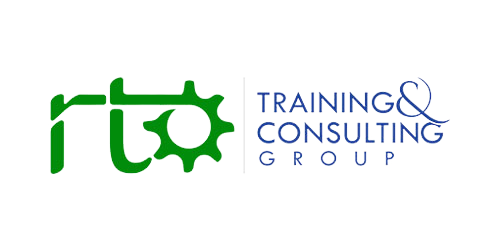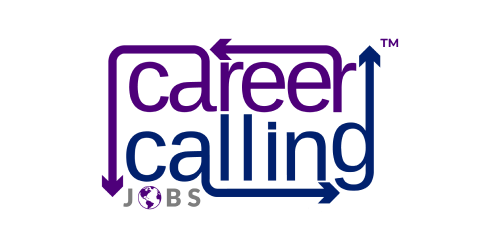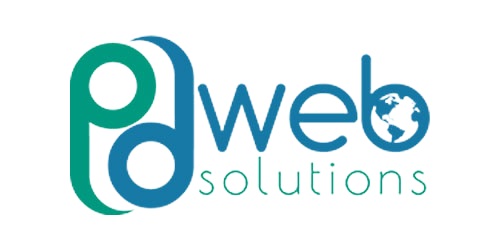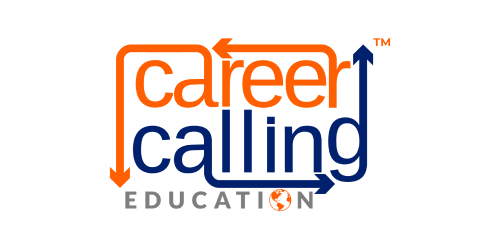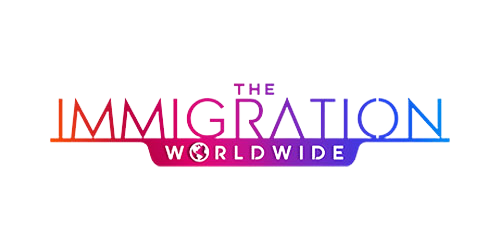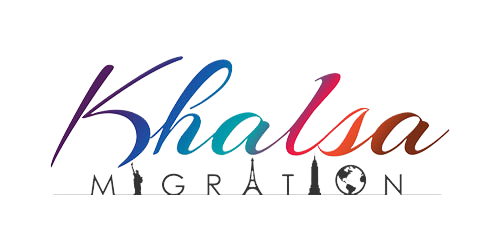Humanity is crossing a threshold. For most of the digital era, we treated “intelligence” as a uniquely human trait and “artificial intelligence” as software that helped at the margins. That framing no longer fits our moment. In 2025, we are beginning to live amid a spectrum of non-human intelligences—some statistical and silicon, some biological and hybrid, some collective and distributed. The practical question is no longer whether we will share the world with these other minds, but how we will shape a co-existence that expands human flourishing, safeguards rights, and steers technology toward the public good. In Australia, where the policy conversation has advanced from “if” to “how,” the challenge is to translate values—safety, fairness, inclusion—into systems, skills and institutions sturdy enough for an age of many intelligences. The choices we make in the next few years will echo through classrooms, clinics, courts, worksites and communities for decades.
It helps to start by widening the lens. “AI” in everyday headlines typically refers to the powerful model families that write, summarise, reason and plan. But if we think of intelligence as the capacity to sense, model, decide and act toward goals, a broader landscape comes into view. There are narrow systems that excel at a single task and generalist systems that can adapt across domains; there are agents that cooperate in swarms and platforms that orchestrate many models at once; there are bio-digital interfaces that extend human capability and quantum approaches that may transform specific problem classes. Measured narrowly, AI is already mainstream in business and public services; a leading global tracker reported a sharp rise in organisational use through 2024, and with it an escalation in investment, deployment and debate. Measured broadly, the “intelligence economy” is only just forming its institutions, rules and social contracts. That is why responsible guardrails—like Australia’s emerging “safe and responsible AI” approach and the EU’s binding risk-based regime—matter so much: they set the norms for how new minds will meet our existing world.
A spectrum of non-human minds
One way to map the terrain is to move from today’s systems outward. At the centre is contemporary AI—the statistical engines that predict tokens, detect patterns, plan actions, learn from feedback, and now coordinate tools. These models have achieved striking practical gains: they draft and debug, triage and translate, help navigate law and logistics, and accelerate discovery and design. Surrounding them are pathways to broader capability. Some researchers anticipate “general” systems—able to perform a wide variety of cognitive tasks with human-like flexibility—arriving within decades; others forecast longer timelines or caution against over-interpreting progress. The honest state of play is uncertainty: expert surveys cluster around a wide band from the 2030s to mid-century, with substantial disagreement about definitions and milestones. Rather than pinning our hopes or fears to a date, it is wiser to prepare our institutions for a persistent rise in machine capability, while insisting on transparency, evaluation and human oversight at every step.
Beyond generality is a further horizon: superintelligence. This is the hypothetical case in which machine systems far exceed the best human performance across science, strategy, invention and social reasoning. For decades, it has been the province of philosophers and futurists; in the last five years, it has also become a practical governance question, as frontier labs and governments debate how to measure dangerous capabilities, constrain misuse and prove controllability. Here too, the prudent posture is dual: a refusal to sensationalise alongside a commitment to scenario-planning, red-teaming and international coordination, much as we do for other low-probability, high-impact risks. The European Union’s AI Act, now entering phased effect, takes a risk-tiered approach that squarely places the heaviest obligations on high-risk and general-purpose systems, while UNESCO’s global recommendation articulates a shared ethical floor focused on human rights, accountability and inclusiveness. Australia’s consultation on “safe and responsible AI” aligns with this trajectory, signalling guardrails for high-risk uses and harm mitigation without freezing innovation. These are not abstract debates; they are the scaffolds for living well with smarter tools.
There are other, less discussed branches of the spectrum that will matter just as much. Social and pedagogical “theory-of-mind” capacity—systems that model what humans believe, intend and feel—is a live research frontier. Benchmarks probing these abilities have become more rigorous after early hype; strong performance on test sets does not equate to human-like understanding, and the field has responded by building harder tasks and emphasising causal reasoning over superficial cues. This healthy scepticism is good news for safety and truthfulness. If we are to embed AI in caregiving, education or mediation, we will need machines that are reliable about people, not just plausible about text.
Collective intelligence is also advancing. Swarm robotics and multi-agent systems draw inspiration from ants, bees and bird flocks: simple agents, local rules, emergent coordination. These systems are leaving the lab and entering warehouses, mines, farms and disaster zones. Drone swarms can map damage, relay communications, and search for survivors; warehouse fleets coordinate to move goods with fewer bottlenecks; and hybrid “human-in-the-loop” approaches are proving more productive than either people or robots alone. As costs fall and reliability rises, Australia’s logistics and emergency-response agencies will increasingly treat swarms as core infrastructure, raising new standards questions around spectrum, safety, privacy and accountability.
Finally, there is the human boundary itself. Brain–computer interfaces (BCIs) that allow people with paralysis to control cursors or type by thought have progressed from feasibility to first-in-human wireless implants. Australia is a quiet leader here: Melbourne-founded Synchron has reported positive 12-month safety outcomes from its minimally invasive “Stentrode,” and international rivals have shown striking demos of cursor control and everyday digital use. These are early steps, with tough ethical and clinical questions to resolve. But they foreshadow a decade in which some forms of “intelligence amplification” move from science fiction to regulated medicine, reshaping disability services and, eventually, workplace accessibility.
Work, wealth and worth in the intelligence economy
Economic forecasts are not oracles, but they discipline our imagination. When McKinsey first estimated the impact of automation back in 2017, its scenarios suggested hundreds of millions of workers worldwide might need to transition by 2030. That headline has been quoted so often that it risks becoming a myth. The reality since then has been more complex: automation diffuses unevenly, new tasks and industries appear, and shocks—pandemics, wars, supply chain resets—can amplify or dampen adoption. What the newer analyses agree on is that generative AI magnifies the potential value of software by automating or accelerating a larger set of cognitive activities. Trillions of dollars of annual productivity gains are on the table if, and only if, organisations redesign processes, upskill their people and integrate AI with judgment and accountability. Australia’s productivity challenge is tailor-made for this kind of transformation: our living standards hinge on lifting multi-factor productivity, and that will require exactly the complementary investments—skills, data quality, modern systems—that turn clever models into real outcomes.
But even the rosiest productivity curves cannot answer the question of worth. What do humans do, and who do we become, in a world thick with competent machines? One clear answer is that judgment becomes more—not less—important. Machines can rank and recommend at scale; people decide what to optimise for. Machines can simulate arguments; people are responsible for truth, fairness and mercy. In Australian terms, that means professional standards bodies, regulators and unions all have a role to play in codifying when and how AI may be used in high-stakes decisions—insurance, credit, parole, hiring, grading—while preserving recourse and the right to a human review. Europe’s new rulebook offers one blueprint; UNESCO’s ethics framework offers another, but a distinctly Australian settlement should reflect our constitutional arrangements, our privacy law, our competition settings and our values about a fair go.
The labour market implications also cut both ways. On one side are genuine displacement risks in back-office, routine cognitive and some creative roles as agentic systems handle drafting, reconciliation, summarisation and first-line support. On the other hand, there are new demand curves for AI-adjacent capability: data stewardship, evaluation and auditing; prompt and workflow engineering; change and service design; domain-specific model tuning; and safety, security and misuse prevention. The VET system sits at the fulcrum. If we nudge curricula, micro-credentials and apprenticeships to embed AI use, oversight and ethics—not as electives but as core literacies in business, health, trades and public administration—we can turn disruption into wage growth and opportunity. If we hesitate, we risk skill shortages and stalled productivity, with regional Australia carrying the heaviest cost through slower diffusion and thinner employer support.
Law, rights and the limits of personhood
As machines take on decisions that affect people’s lives, rules must do more than punish bad outcomes after the fact; they must structure duties up front. Australia’s “safe and responsible AI” path—focused on guardrails for high-risk uses, vendor duties around testing and transparency, and proportionate obligations—fits the character of our regulatory tradition: pragmatic, risk-based, sector-aware. The EU’s AI Act, now rolling through staged enforcement dates, is the most sweeping legal regime to date. It prohibits certain practices outright, imposes obligations on high-risk applications, and sets separate duties for providers of general-purpose models, including transparency about training data, safety policies and evaluation. For Australian firms exporting to the Single Market—or building products that may be used there—understanding the EU’s timeline is already a commercial necessity.
Inevitably, as systems grow more autonomous, a provocative question returns: should machines ever have “rights”? Today, the answer in law is a clear no. Courts that have stretched personhood to rivers or ecosystems have done so to protect human and environmental interests; they have not granted agency to algorithms. Intellectual property law is explicit: inventors must be people. In 2023, the UK’s Supreme Court reaffirmed that an AI cannot be named an inventor on a patent. These bright lines matter because they keep accountability human. As we invite new forms of intelligence into our institutions, the safest morality clause is still the oldest one: humans build, deploy and benefit from machines; humans bear responsibility for harms. UNESCO’s global recommendation on AI ethics—which Australia supports—builds from that premise, grounding governance in human rights, dignity and the public interest.
Science frontiers: from quantum speedups to augmented minds
There is a risk that talk of “new intelligences” drifts into mystique. Better to stay anchored in concrete progress and honest limits. Quantum computing, for example, has produced headline-grabbing demonstrations, but practical advantages will be domain-specific and hard-won. Where quantum algorithms align with problem structure—certain kinds of optimisation, chemistry simulation or cryptography—hybrid “quantum-classical” workflows may eventually offer compelling speedups. For broad machine learning tasks, however, claims of blanket, astronomical acceleration should be treated with caution until hardware scales, error correction improves, and end-to-end applications deliver verified gains. The right stance for educators, investors and policymakers is disciplined curiosity: we should track proofs of concept, build talent and partnerships, and be ready to pivot the moment a quantum advantage in a socially valuable task is demonstrated. The same sobriety should guide neurotechnology. Wireless implants restoring cursor control to people with paralysis are a giant leap for assistive tech; they are not a path to mind-reading classrooms or thought-policed workplaces. Translational medicine takes time, and ethics must lead.
Culture, meaning and the human project
Technologies don’t just change what we do; they change how we feel about what we do. In surveys, Australians express simultaneous curiosity and caution about the AI future. That ambivalence is rational. We love the way an assistant can summarise a contract, map a trip or brainstorm an assessment; we worry about jobs, privacy, deepfakes and the dulling of our own craft. The healthiest response is not to pick one feeling and suppress the other, but to design for both: to demand real, measurable benefits from new systems while sharply constraining their misuse; to double down on human skills—attention, empathy, ethics, ensemble work—that machines amplify but cannot replace; to keep our sense of humour when the occasional hallucination reminds us that “fluent” is not the same as “true.”
Culture is also where the deepest questions live. If machines compose symphonies and invent drugs, where does that leave originality? If agents negotiate with agents at electronic speed, what happens to deliberation and democracy? These are not puzzles for philosophers alone; they are design briefs for institutions. Parliaments can mandate provenance for political ads. Newsrooms can watermark synthetic content. Universities can teach citation, verification and model limits as literacy, not punishment. In the VET system, trainers can turn AI from a threat to assessment integrity into a partner in evidence gathering, feedback and simulation—clear rules, higher standards, better outcomes.
A distinctly Australian settlement
Australia has an advantage: we are pragmatists. Our health system blends public baseline with private choice; our competition policy prizes dynamic markets; our education system spans school-based VET, TAFE, private RTOs and universities; our public service has a tradition of sober, evidence-based reform. That institutional temperament is well-suited to governing an intelligence spectrum. It suggests a few priorities worth pursuing with urgency.
The first is skills at scale. Every qualification—from carpentry to care, hospitality to heavy industry, business to bioscience—should now treat AI use and oversight as core competence. That means hands-on practice with domain-specific agents and tools, not just theory; it means assessment rubrics that reward transparent use and penalise unacknowledged outsourcing; it means funding levers that let smaller and regional providers access shared infrastructure. The second is evidence and evaluation. We should require impact audits for high-stakes deployments, publish reliability and bias metrics, and build national “model cards” and “system cards” for government AI services. The third is guardrails that travel. Our exporters will live under the EU’s regime whether we like it or not; aligning our public-sector procurement standards and safety expectations with leading jurisdictions will spare Australian firms duplicative compliance while protecting citizens from the worst risks. The fourth is inclusion by design. When rural students gain access to simulated labs, when Indigenous communities co-design data governance, when disability services incorporate BCIs and accessible agents, we don’t just manage risk; we expand opportunity.
Finally, we should keep sight of what a good society looks like in an age of many minds. The aim is not to “win” a race against machines, nor to outsource human problems to algorithms. It is to co-evolve—to pair machine competence with human judgment, machine speed with human care, machine reach with human rights. If we do that, the intelligence spectrum becomes less a threat and more a scaffold: a way to lift productivity without hollowing out dignity; to accelerate discovery without abandoning prudence; to widen access to services without narrowing the human role to mere oversight.
Australia can lead here by temperament as much as by technology: clear-eyed about risks, allergic to hype, ambitious for shared prosperity. The future of humanity is not “living with AI” as a single, monolithic other. It is living among many intelligences—artificial, collective, embodied and hybrid—and choosing, deliberately, the kind of country we want to be in their company. That work begins now, with the rules we write, the skills we teach, the systems we build and the stories we tell.
Key sources informing this essay include the Stanford AI Index 2025 (on adoption and capability trends), the EU AI Act rollout (for risk-based obligations and timelines), UNESCO’s Recommendation on the Ethics of AI (as a global normative baseline), Australian government materials on safe and responsible AI (for local policy direction), and peer-reviewed and industry reports on multi-agent and swarm systems, BCIs and enterprise productivity. Representative citations are provided above for the most consequential claims.


















